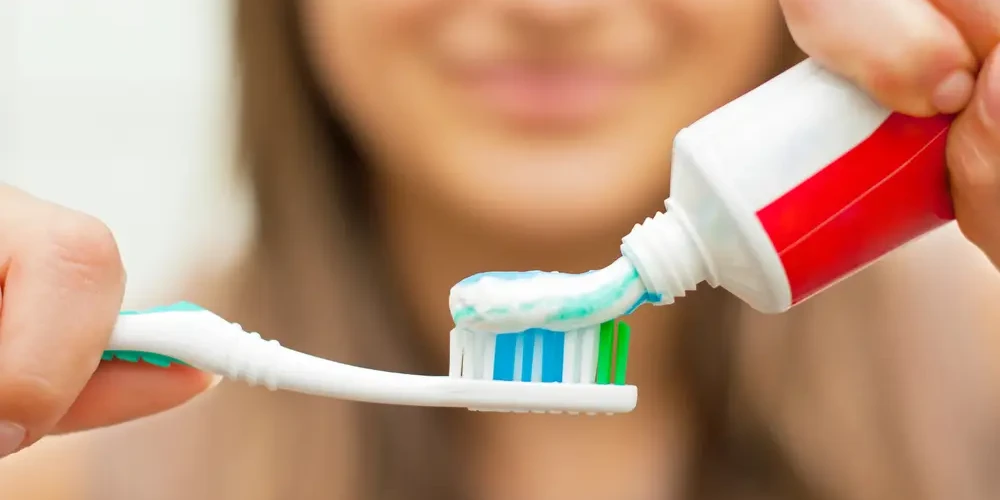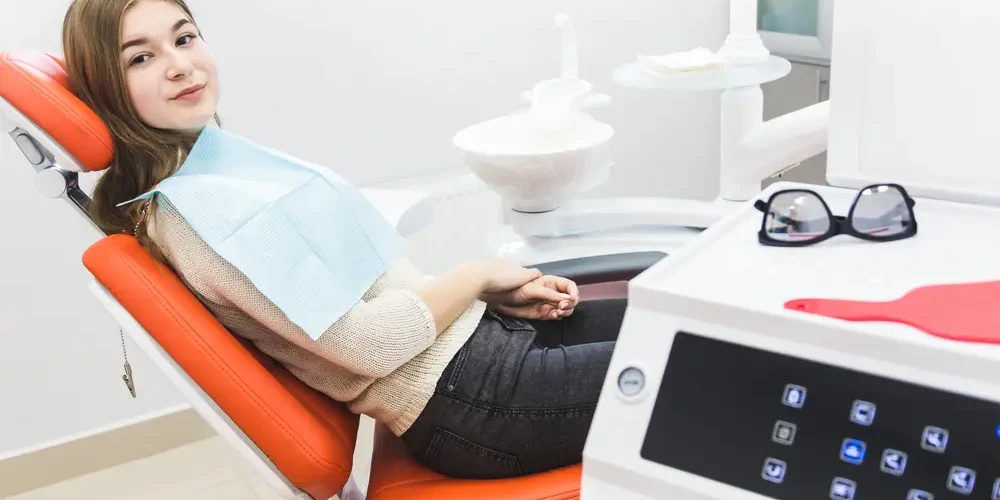A healthy smile is more than just brushing and flossing regularly. The foods you eat play a big role in keeping your teeth strong and chip-free. Some foods, while tasty, can be hard on your teeth and cause chipping. Here’s a guide to help you understand which foods to watch out for and how to enjoy them safely.
Foods that are notorious for chipping teeth
Some examples of foods that can easily chip teeth include:

Hard Candies and Sweets
Hard candies can be a sweet treat, but they’re tough on your teeth. Biting down on these candies can cause your teeth to chip. Try to suck on candies rather than chew them, or choose sugar-free options and softer sweets.

Ice
Many people enjoy chewing on ice, especially in hot weather. However, ice is very hard and can easily cause a tooth to chip. Let ice melt in your mouth instead of biting it, or skip the ice in your drinks altogether.

Nuts
Nuts are healthy, but some, like almonds and walnuts, can be very hard. Biting into a whole nut can put too much pressure on your teeth. Consider chopping nuts into smaller pieces or enjoying nut butters to protect your teeth.

Bone-In Meats
Ribs, chicken wings, and other bone-in meats can be risky if you bite directly into the bone. Bones are extremely hard and can cause significant damage to your teeth. Cut the meat off the bone before eating.

Hard Bread and Bagels
Crusty bread and bagels are delicious but can be tough on your teeth. Biting into a hard bagel or crusty bread can lead to chipping. Warm these foods up or eat them with softer spreads to make them easier to chew.

Fruit with Pits
Fruits like cherries, olives, and peaches have hard pits inside. Accidentally biting into a pit can cause a tooth to chip. Always remove pits before eating these fruits.

Corn on the Cob
Biting directly into corn on the cob can lead to dental issues. Cut the corn off the cob to enjoy it without risking a chipped tooth.
Risk Factors for Chipping a Tooth
- Weak Enamel: If your enamel is weakened due to poor oral hygiene, acidic foods, or other factors, your teeth are more prone to chipping.
- Previous Dental Work: Teeth with fillings or crowns might be more vulnerable to chipping, especially if the dental work is old or damaged.
- Bruxism (Teeth Grinding): Grinding your teeth, especially at night, can wear down enamel and increase the risk of chipping.
- Age: As we age, our teeth can become more brittle and prone to chipping.
- Sports and Physical Activities: Engaging in sports or activities without proper mouth protection can increase the risk of dental injuries, including chipped teeth.
Different Types of Chipped Teeth
Understanding the types of chipped teeth is essential because the treatment plan will depend on the severity and location of the chip. Accurate diagnosis ensures the best possible outcome. Here are some common types of chipped teeth:
- Craze Lines: Craze lines are tiny, superficial cracks in the outer enamel layer of the tooth. They are often harmless and don't require treatment unless they cause aesthetic concerns or sensitivity. If treatment is needed, veneers are a popular option for covering these lines and restoring the tooth’s appearance.
- Fractured Cusps: A fractured cusp occurs when a part of the tooth’s chewing surface breaks off. This type of chip often happens due to biting down on hard foods or as a result of a weakened tooth structure from a large filling. Treatment usually involves placing a crown to protect and strengthen the remaining tooth.
- Cracked Teeth: Cracked teeth involve a crack that extends deeper into the tooth, often reaching down toward the root. The crack may cause pain when chewing, and treatment varies depending on the extent of the crack. For mild cracks, bonding may suffice, but severe cases may require a crown or even a root canal.
- Split Teeth: A split tooth is a more serious condition where the crack runs from the chewing surface all the way down to the root, often separating the tooth into distinct parts. Treatment options include a root canal, crown, or in more severe cases, tooth extraction followed by a dental implant or bridge to replace the lost tooth.
- Broken Teeth: A broken tooth occurs when a significant portion of the tooth breaks off, exposing the dentin or even the pulp. This type of damage usually causes pain and requires immediate attention. Depending on the severity, a dental crown or root canal might be necessary to save the tooth.
By identifying the type of chip, your dentist can provide the most appropriate care, ensuring the longevity of your smile.
What to Do If You Chip a Tooth
- Rinse Your Mouth: Use warm water to rinse your mouth and clean the area around the chipped tooth.
- Stop Any Bleeding: If there is bleeding, apply gentle pressure with a piece of gauze or a clean cloth.
- Save the Chip: If you can find the broken piece of tooth, save it in a clean container with milk or saliva. This might help your dentist in the repair process.
- Avoid Using the Tooth: Try not to use the chipped tooth for eating or biting until you see your dentist.
- Pain Relief: If you’re in pain, over-the-counter pain relievers can help. Avoid eating hard foods and try to stick to soft foods until you can see your dentist.
- Visit Your Dentist: Schedule an appointment with your dentist as soon as possible. They can assess the damage and recommend the best treatment.
How Is a Chipped Tooth Treated?
- Bonding: For minor chips, your dentist can use a tooth-colored resin to repair the damage. This material bonds to your tooth and is shaped to match your natural tooth.
- Veneers: For larger chips or front teeth, veneers might be an option. These thin porcelain shells cover the front of the tooth, providing a natural appearance.
- Crowns: If a large portion of the tooth is chipped, a crown may be necessary. Crowns cover the entire tooth, restoring its shape, strength, and appearance.
- Root Canal: In severe cases where the chip exposes the tooth's pulp, a root canal may be needed to remove the damaged pulp and seal the tooth.
- Extraction: In rare cases where the tooth is severely damaged and cannot be repaired, tooth extraction might be necessary. Your dentist will discuss replacement options like implants or bridges.
Conclusion
Protecting your teeth from chipping involves more than just good oral hygiene. By being aware of the foods that can cause chipping, understanding your risk factors, and following these simple tips, you can keep your smile healthy and beautiful. Remember, if you do chip a tooth, prompt action and visiting your dentist can make all the difference in the outcome. Enjoy your favorite foods safely and protect your smile!
You may also like
Best Whitening Toothpaste: A Guide to Brighter Smiles
Explore top whitening toothpastes for a brighter smile. Our guide highlights key products, ingredients & tips to remove stains & maintain oral health.
Wisdom Teeth Pain Relief —Soothe Wisdom Teeth
Discover a range of solutions for alleviating wisdom teeth pain, from home remedies to professional treatments, to ease discomfort and aid recovery.
Wisdom Tooth Pulled Infection
Discover the symptoms of infection following wisdom tooth removal, along with causes and treatments to aid healing and prevent further issues.
How Long Does Wisdom Teeth Removal Take
Find out how long wisdom teeth removal typically takes, including the procedure duration and factors that can influence the time needed for a successful extraction.





